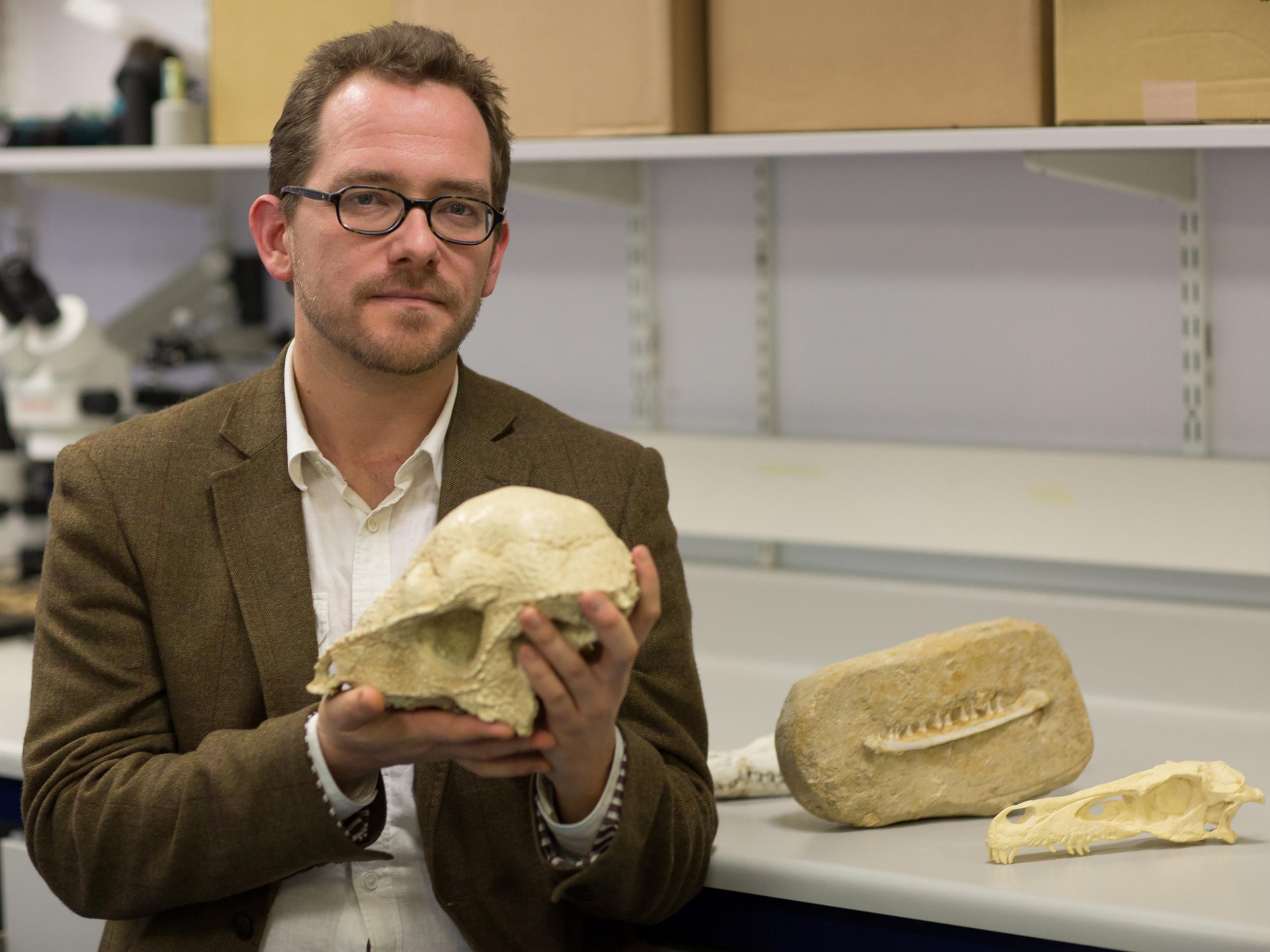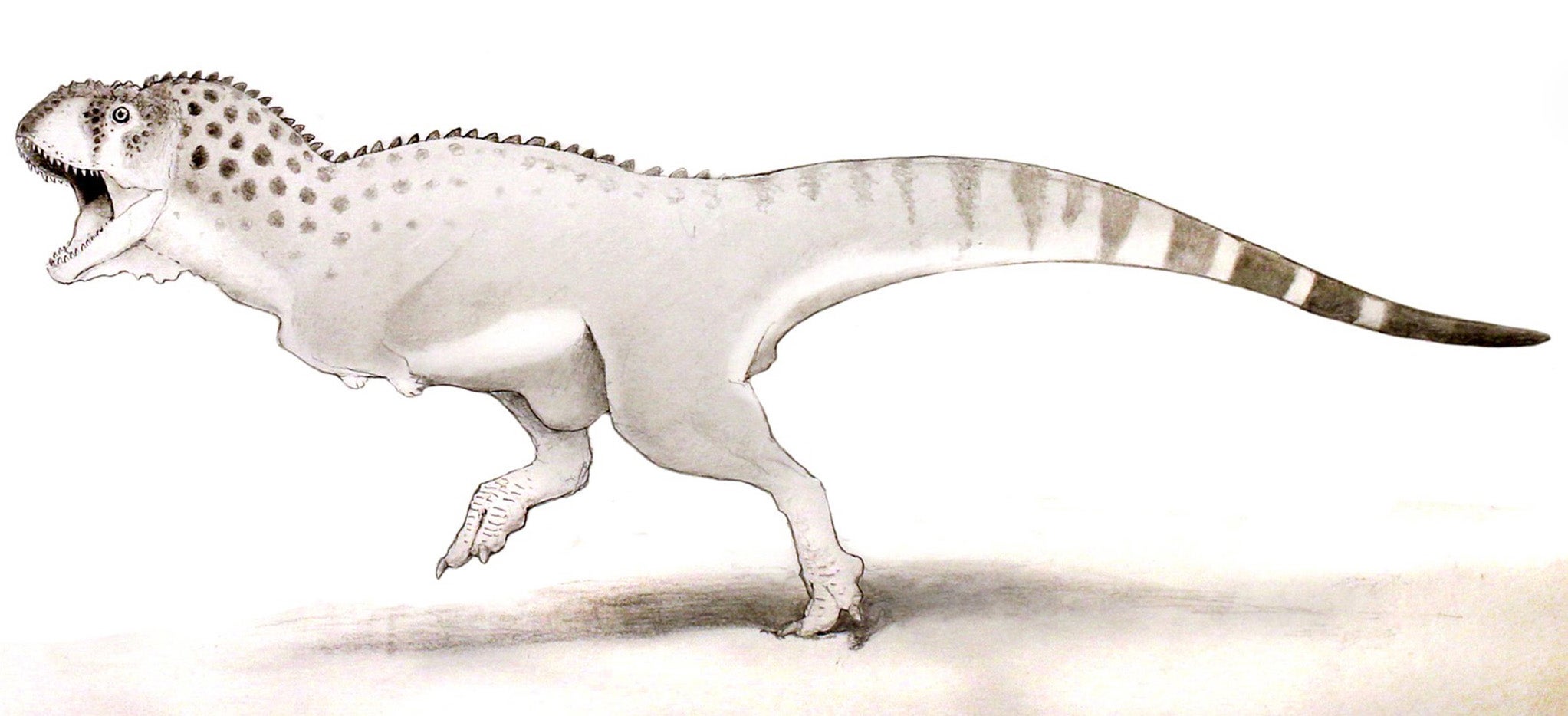Last African dinosaur's bones discovered in Morocco
Palaeontologists liken discovery of extremely rare Chenanisaurus barbaricus fossil in phosphate mine to winning the lottery

Your support helps us to tell the story
From reproductive rights to climate change to Big Tech, The Independent is on the ground when the story is developing. Whether it's investigating the financials of Elon Musk's pro-Trump PAC or producing our latest documentary, 'The A Word', which shines a light on the American women fighting for reproductive rights, we know how important it is to parse out the facts from the messaging.
At such a critical moment in US history, we need reporters on the ground. Your donation allows us to keep sending journalists to speak to both sides of the story.
The Independent is trusted by Americans across the entire political spectrum. And unlike many other quality news outlets, we choose not to lock Americans out of our reporting and analysis with paywalls. We believe quality journalism should be available to everyone, paid for by those who can afford it.
Your support makes all the difference.One of the last dinosaurs living in Africa before their extinction 66 million years ago has been discovered in a phosphate mine in northern Morocco.
The scientist who made the discovery likened it to winning the lottery as the new species - Chenanisaurus barbaricus - is so rare.
The dinosaur is a smaller African contemporary of the North American Tyrannosaurs rex.
Last year, Dr Nick Longrich, from the University of Bath, studied a rare fragment of a jaw bone that was discovered in the mines at Sidi Chennane in the Oulad Abdoun Basin, Morocco.
In collaboration with colleagues based in Morocco, France, and Spain, Dr Longrich identified it as belonging to an abelisaur.

Abelisaurs were two-legged predators like Tyrannosaurs rex and other tyrannosaurs, but with a shorter, blunter snout and even tinier arms.
While the tyrannosaurs dominated in North America and Asia, the abelisaurs were the top predators at the end of the Cretaceous period in Africa, South America, India and Europe.
Dr Longrich said: “This find was unusual because it's a dinosaur from marine rocks - it's a bit like hunting for fossil whales and finding a fossil lion.
“It's an incredibly rare find - almost like winning the lottery. But the phosphate mines are so rich, it's like buying a million lottery tickets, so we actually have a chance to find rare dinosaurs like this one.
“We have virtually no dinosaur fossils from this time period in Morocco - it may even be the first dinosaur named from the end-Cretaceous in Africa.
“It's also one of the last dinosaurs in Africa before the mass extinction that wiped out the dinosaurs.
“It's an exciting find because it shows just how different the fauna was in the southern hemisphere at this time.”
The newly-discovered dinosaur stood on two legs and had stumpy arms.
“Abelisaurs had very short arms. The upper arm bone is short, the lower arm is shorter and they have tiny little hands,” Dr Longrich added.
The teeth from the fossil were worn as if from biting into bone, suggesting that, like Tyrannosaurs rex, Chenanisaurus was a predator.
However, unlike the partially-feathered Tyrannosaurs rex, Chenanisaurus had only scales, its brain was smaller and its face was shorter and deeper.
Copyright Press Association
Join our commenting forum
Join thought-provoking conversations, follow other Independent readers and see their replies
Comments